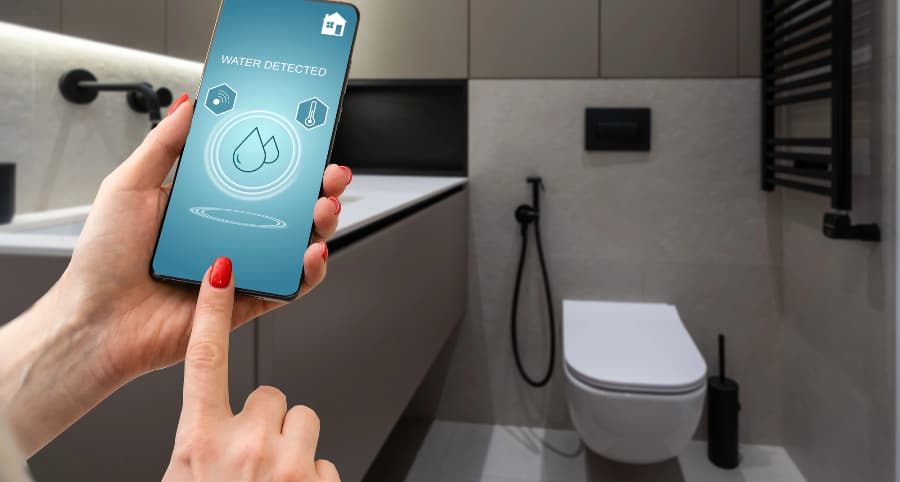How does a water sensor work and why connect one to your Austin smart home?

One tiny leak in your home can lead to significant difficulties and thousands in damage. You must protect against this threat; fortunately, there’s an easy way to do so. A water sensor is an effective, simple, and affordable solution. See how they work and why you should connect water sensors to your Austin smart home.
How water sensors shield Austin homes
Water infiltrates homes in numerous ways, whether from an appliance breakdown, plumbing problem, storm-related incident, or simple human error. No matter how it happens, you must know right away, and this is why water sensors are important. But how do they really work?
Most water sensors are conductive and operate with a pair of electrodes. When water enters the space between the electrodes, an electrical link is created, activating your alarm. You’ll also come across capacitive sensors that release an electrical field. When water reaches the conductive parts of these devices, the field is disrupted, and your alarm triggers. Optical sensors employing infrared LED light are an additional option.
Get more from your water sensor
A few specialized water sensors give you even more defense as they have incorporated temperature sensors. This is an exceptional feature in preventing frozen pipes. If there’s an extreme reduction in temperature, you’ll find out right away. Taking steps before pipes burst will save you from water infiltration and exorbitant repair costs.
Why connect water sensors to your Austin smart home?
When water emergencies arise, you have to be alerted at once. You can achieve this aim by connecting water sensors to your smart home. Whether you’re there to hear the alarm or somewhere else, you’ll get an instant alert on your smartphone. As an added benefit, your 24-hour monitoring team will be notified. Each moment counts in a water emergency to control the damage and disturbance to your family.
Where should you install water sensors?
Any location susceptible to an influx of water is an appropriate position for water sensors. Consider installing in these spots:
- Bathrooms: Attach near tubs or behind toilets.
- Basements: Water often infiltrates lower floors via leaky walls or due to excessive rain or malfunctioning sump pumps.
- Near water heaters or appliances: Any water-utilizing appliance could over time leak.
- Below sinks: Water sensors are great for identifying pipe leaks in areas hidden from view.
- Attics: Identify roof leaks promptly and avoid expensive repairs.
Request water sensors with your Vivint smart home
Give your property the robust protection it requires with Vivint’s modern devices. Our water sensors in Austin connect to your Vivint smartphone app to deliver immediate alerts when your alarm activates. You also get incorporated temperature sensors to avoid pipe freezing. Learn more about the smart home tools available in Austin by dialing (512) 229-9684 today.
